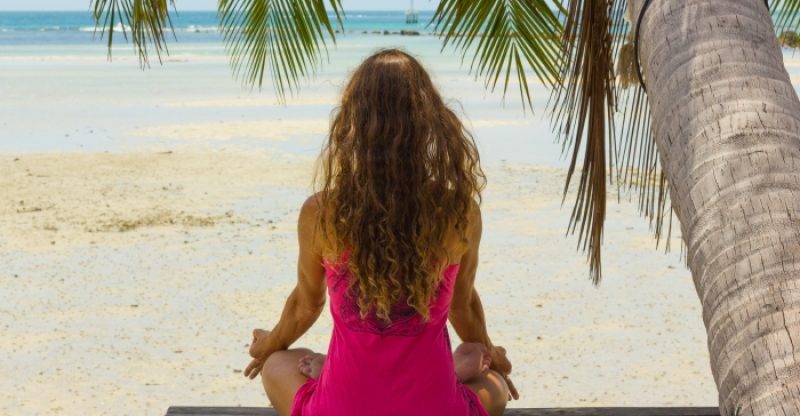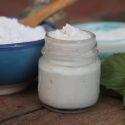The Best Yoga Poses to Build Strength, Increase Flexibility and Boost Energy
What is Yoga
Yoga is a dynamic form of exercise that offers an extraordinary mental and physical benefits to its practitioners (1).
It is unique in its ability to attract disciples of all ages and backgrounds, with varied fitness levels and goals.
The ancient Indian discipline improves flexibility, focus, and overall fitness and offers a window into spirituality for those interested in tapping into its Vedic roots.
Importantly, research has shown that when practiced regularly, yoga may be as effective as other forms of exercise in improving overall health (2).
There are many schools of yoga and each offers its own advantages to those interested in improving their climbing practices.
Regardless of the school studied, specific yoga asanas (or poses), if performed routinely, help to build strength, dexterity, and endurance in climbers.
Pranayama Breathing
Pranayama is a yogic practice focused on breathing and breath control.
Mastery of the Pranayama technique can help boost energy and increase the overall feeling of vitality in practitioners.
Learning how to breathe, while a seemingly mindless and routine part of being alive, is an essential, and often overlooked, part of climbing.
Breath control can free up the mind and sharpen focus when you are on the wall.
Pranayama breathing also improves wakefulness, improves oxygenation, and can reduce stress and anxiety in practitioners (3).
Research has shown that regular pranayama breathing and meditation has beneficial effects on cardiovascular health functions in people of all ages, genders and body types (4).
Kumbhaka Pranayama
This practice lives at the core of pranayama yoga and allows yogis to focus on the basics: breathing in and breathing out.
Kumbhaka helps the lungs expand and contract, and this asana can be built upon through modifications that further challenge and increase lung capacity.
A focus on the Kumbhaka Pranayama is the perfect way to begin a breathing cycle that can support relaxation and focus during a climb.
Ujjayi Pranayama
The ujjayi breath helps a yogi relax their mind and warm up the body.
The word “ujjayi” means to ‘to conquer’, and this breathing technique is focused on controlling respiration in order to overcome mental and physical agitation.
During ujjayi breathing, deep inhales fill the lungs with air while a contraction of the throat creates a hissing or crackling sound while the exhale is taken with a closed mouth as the breath rolls in the back of the throat, creating a constriction near the glottis.
This is often practiced at first with an open mouth exhale, but a complete and final execution is done with a closed mouth exhale.
Though the breathing technique might seem and sound funny at first, the ujjayi breath helps yogis maintain steady and rhythmic breathing which can be calming and encourages mindfulness and focus.
This breathing technique is especially powerful during a climb because it improves respiratory efficiency and circulates oxygen to the brain.
The calm it elicits can be beneficial for clearing the mind while solving difficult climbing problems.
Mula Bandha
The Mula Bandha asana is a marriage of pranayama breathing and meditation and is an advanced yogic practice.
Mula Bandha is a deep form of breathing that begins far below the lungs through a contraction of the pelvic muscles.
The pose develops and strengthens the pelvic muscles and creates energy that moves throughout the body.
The asana is said to be stabilizing through its regulation of respiration, heart rate, blood pressure and more.
A 2014 study in the Indian Journal of Physiology and Pharmacology found that there were immediate improvements in hand grip strength and hand speed – even in patients living with rheumatoid arthritis – after pranayama breathing (5).
Regular pranayama breathing practices will improve concentration and mindfulness in yogis, and help climbers energize and focus when on the wall.
Flexibility
The value of flexibility for any climber a no-brainer.
If you want to utilize high feet, toe or heel holds, or counterbalance your weight through a flag, then you have got to be flexible.
There is no question that tackling challenging routes is easier through the gains in a range of motion that comes with increased flexibility.
But what is flexibility, really?
Flexibility is the ability of muscles to lengthen and stretch safely to allow for sharper, deeper movement in joints.
Most athletes, including climbers, know that stretching before activity improves flexibility and could decrease the chance of injury.
Yet, many people refuse to engage in the activity because, well, it can be kind of boring.
The regular practice of yoga can help to stretch muscles and elongate them over time.
Like anything else, the more frequently you practice yoga, the easier it’ll get — partly because your muscles are longer from the routine, regular stretching that comes with moving through asanas.
Expert reviews from 2008 found that yoga improves flexibility by addressing imbalances in musculoskeletal system affecting spine alignment and posture (6).
Yoga asanas focusing on flexibility target muscle groups in the core which improve balance, and also increase hip flexion and spinal and hamstring flexibility — which all improve climbing.
Asanas that Improve Flexibility
Marjariasana and Bitilasana (Cat and Cow Poses)
Cat and Cow poses are yin and yang spine warming asanas.
To start the pose, you begin on the ground with your hands and knees on the floor and with your back in a tabletop position.
In Cat position, your spine will round toward the ceiling and your head will release toward the floor.
Inversely, Cow position allows your belly to sink toward the floor while you raise your chin toward the ceiling.
Spinal health is extremely important for climbers and stretching through the Cat/Cow positions, along with other spinal twists, support a fluid range of motion when climbing.
Gentle spinal stretching also relieves lower back pain or soreness after a challenging climb.
Uttanasana (Forward Bend)
Uttanasana is a fairly straightforward yoga asana, but tremendous benefits.
Yogis begin in standing and bend forward at the hip joints.
With knees softly bent, the torso, hamstring, spine, and hips are stretched.
The stretch lengthens muscles in the back of the legs and helps climbers improve their flagging technique.
High Lunge
The high lunge begins in Uttanasana and ends in a deep stretch with one leg bent at 90° and the other leg stretched straight behind the body.
The torso lengthens when laid atop the front thigh, the groin is stretched, and all the muscles in the leg are extended.
In addition to improving leg and core flexibility, the pose improves digestion, relieves constipation and can relieve pain from sciatica.
Much like Uttanasana, high lunges improves a climber’s ability to flag as well as develop capability around heel and toe holds.
Eka Pada Kapotasana (Pigeon)
The pigeon pose is incredible for loosening and stretching all the muscles in the hips, groin, abdomen, upper thighs, shoulders and neck, and can be made more intense through variations on the foundational asana.
The pose begins in tabletop, and one knee is then slid forward to touch the wrist on the same side, with your leg bent to the side.
The buttock on the same side will hover slightly above the floor.
At the same time, the alternate leg will stretch behind you with your shin resting flat against the floor.
Because stepping upwards during a climb creates a lot of rotation in the hip, this asana is great for releasing tension in the hips and thighs both before and after a climb.
Malasana (Garland Pose)
Like a lot of the flexibility-focused asanas, Malasana lengthens the spine, the muscles in the groin and improves balance.
Importantly, it also brings calm and focuses to yogis.
The pose is excellent for anyone that sits at a desk all day for work because it stretches and develops the muscles that are slack when we are sitting in a chair.
This full range-of-motion, squatting pose keeps your knees bent, your bottom hovering just above the ground, and your torso pressed against the front of your legs.
With elbows resting on the inner edges of knees, body weight should be distributed to the outside parts of the feet as much as possible, which helps maintain an inward thigh rotation that can help that torso-to-thigh compression.
For people still working on developing their sense of balance or that are having trouble evenly distributing your weight, props can be helpful.
A small, thin bolster or rolled up towel behind the legs can ease pressure to the knee joint, a small wedge can be placed under the heels to support balance, or a low bench or crate can be placed underneath the bum to support the pelvis.
The pose stretches the spine, quadriceps, hamstrings, lower back and the tiny muscles in the ankles and groin.
It also supports core strength building.
Garudasana (Eagle)
Garudasana is a twisting position that stretches and squeezes the muscles in the arms and legs simultaneously.
With one leg firmly rooted on the ground, you wrap the other leg around and also wrap your arms in such a way that your hands are clasped near the face.
Garudasana requires extreme focus and improves balance, which are both elemental for climbers.
The wrapping of the arms and legs around one another increases circulation and creates acute awareness of the limbs that can be helpful when attempting challenging toe and heel holds or dihedral stemming.
Strength
In a recent First Ascent blog post, we discussed the importance of strength training for climbers (7).
The stronger you are, the easier it is to tackle a challenging climb.
A key ingredient to safe, impactful strength training is the acute awareness of form and posture.
So, it makes perfect sense that yoga would be a great way to build strength because it is almost entirely focused on form and positioning.
Beyond the benefits climbers can experience from strength training through yoga, this form of regular exercise improves bone health by adding new bone and reducing bone loss, which has been shown to dramatically impact on overall bone strength (8).
Recently, researchers examined core muscle function during specific yoga asanas and found that poses like planks, downward facing dog, chair pose, and Warrior I, amongst others, were effective for strengthening muscles in the core, the back, and the glutes (9).
Further, studies have shown yoga builds handgrip strength in both normal subjects and those suffering from rheumatoid arthritis (10) and has been a proven intervention for hand and wrist ailments like carpal tunnel syndrome (11).
In one study, subjects were evaluated before and after an eight-week yoga training program, which included ten minutes of pranayama breathing, 50 minutes of physical asana poses and ten minutes of supine relaxation.
Isokinetic muscular strength for elbow extension, elbow flexion, and knee extension increased by 31%, 19%, and 28%, respectively, whereas isometric muscular endurance for knee flexion increased 57%.
Of course, the significant improvements to body weight and bone density resulting from yoga training is also nothing to laugh at for anyone looking to yoga to improve both their climbing and their overall health (12).
Asanas that Build Strength
Surya Namaskara (Sun Salutation)
The Surya Namaskara asana, or Sun Salutation, is one of the most effective yoga sequences for building strength.
The sequence is composed of a number of asanas, and those asanas vary amongst yoga schools and practitioners, but the sequence, itself, is a part of almost every yoga practice and works for nearly every muscle group in the body.
In one of its more advanced iterations, the Sun Salutation begins in standing with feet at hip width with hands in prayer position near the chest.
Arms are then raised overhead and the back is arched.
With an exhale, the body then bends at the hips, knees soften and hands are placed on the floor.
Legs then shoot back in a jump or step back into Adho Mukha Svanasana (Downward-Facing Dog.)
The body shifts to push-up or plank position, and with an exhale, the knees, chest, and chin are lowered to the floor.
The chest then slides forward and then the head tilts up until the back is arched into Bhujangasana (or cobra pose.)
With another exhale, the toes are curled under, the hips pop up, the legs extend, and the chest moves down towards the floor again.
With hands on the floor, the right foot steps forward between the hands and eyes look straight ahead.
The left foot follows, the knees soften and the body is once again bent at the hips.
With an inhale, the arms again lift overhead from the front or from the sides, the back arches up and the head follows through a slow roll-up along the spine.
With an exhale, the hands return to prayer position near the chest.
The sequence is repeated between three and 12 times.
The Sun Salutation has a number of benefits to a climber which include:
- Lengthening and stretching the muscles in the spine;
- Strengthening and stretching the arms and legs;
- Focusing on and improving posture;
- Improving lung capacity by linking the breath to bodily movement.
Adho Mukha Svanasana (Downward-Facing Dog)
Undoubtedly the best-known yoga asana to date, Downward Facing Dog is part of the Sun Salutation sequence.
The body is bent at the hips, and hands are planted firmly on the ground with fingers spread.
Legs step or jump backward so the body is bent at a 90° angle from the hips.
The knees should be slightly bent at first and the heels are lifted up from the floor.
The tailbone is lengthened away from the pelvis and raised toward the ceiling.
With an exhale, the heels press toward the floor, the knees straighten and the outer thighs gently roll inward.
Weight is distributed toward the outer arms, with the tops of fingers aligned to the top of the yoga mat and the index finger pushing actively into the floor.
The head is between the upper arms, and shoulder blades are wide and drawn down toward the tailbone.
Downward Facing Dog stretches the shoulders, hamstrings, calves, feet, and hands and strengthens both the top and bottom halves of the body.
Strengthening the outer and inner thigh muscles through this asana can help climbers lock onto the wall, and avoid barn dooring.
Plank
With its root in the Sun Salutation, the Plank pose builds strength in the upper body, especially the core muscles.
From Downward Facing Dog, inhale and move the torso forward until the shoulders are in line with the wrists and the torso is parallel to the floor.
The top half of the body is flat, like a tabletop pose, and the body is bent and angled from the hips to the feet.
The base of the skull is pulled away from the back of the neck and eyes look softly at the floor.
The position should be held for 30 seconds to a minute.
Core strength is important for overall health, but especially key for climbers you use their center of gravity and core strength to hold their weight during challenging climbs.
Vasisthasana (Side Plank)
Taking the plank position one step further, the Vasisthasana or Side Plank moves the body into a straight, angled line from the floor.
From Downward-Facing Dog, weight is shifted to the outside edge of the right foot, while the left leg and foot are stacked on top of the right.
The right hand continues to push up from the ground, the right arm is straight and the left-hand swings onto the left hip or is raised in a straight line toward the ceiling.
The torso turns to the left and the body’s weight is supported by the right hand and the abdominal muscles.
Eyes gaze softly at the ceiling.
The shoulder blades, sacrum, core muscles, and thighs are activated to support the body’s weight.
The body looks like a starfish with arms and legs pointed to all sides.
Beginners to yoga might find this pose challenging, and can press their soles against the wall to help balance their weight.
For climbers, the Side Plank has incredible muscle strengthening benefits because it works muscles in the arms, legs, wrist, and hand, and improves balance.
A study in the North American Journal of Sports Physical Therapy revealed that the plank position and its variations were found to be effective exercises for building strength in core muscles including the obliques and the transversus abdominis muscles (13).
Purvottanasana (Upward Plank or Upward Tabletop)
Both the upward plank and upward tabletop poses will strengthen your shoulders, arms and the tiny muscles in your hand and wrists.
The inverse of the traditional tabletop or plank poses, these upward poses are similar to bridge poses because your navel is facing the ceiling as you hold the pose.
The upward tabletop is great for beginning yogis or those people looking to develop upper body strength, and both poses counter the sitting we do every day.
Because they open up the front of the body, the poses are great for recovering and stretching muscles after a climb because they move stagnant energy away from the chest and abdominal area and strengthen the shoulders and muscles along the spine.
Conclusion
Yoga is an incredible way to improve your energy level and focus while you also build strength and increase your flexibility.
Overall, this beloved form of exercise — and stress-relief — is guaranteed to support and improve your climbing both at the gym and on the rock.
Most importantly, yoga’s life-affirming and meditative benefits can be highly addictive and will help you keep you coming back again and again.
FDA Compliance
The information on this website has not been evaluated by the Food & Drug Administration or any other medical body. We do not aim to diagnose, treat, cure or prevent any illness or disease. Information is shared for educational purposes only. You must consult your doctor before acting on any content on this website, especially if you are pregnant, nursing, taking medication, or have a medical condition.
HOW WOULD YOU RATE THIS ARTICLE?







Are there any contraindications for these poses for a person with lower back pain?
How much time should I stand in each pose for the most effect?
Is it possible to improve flexibility at the age of 50? Won’t than do more harm than good?